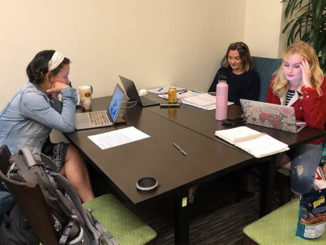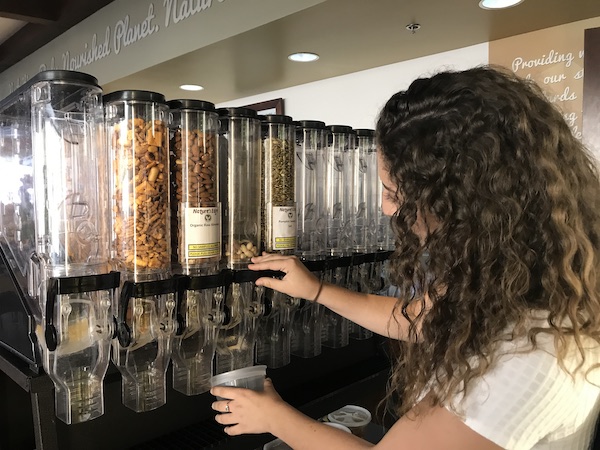
Most people look at nutrition labels to know what they are eating.
But for Robbie Skead, junior international business major, nutrition labels stand between him and a long evening spent in the bathroom.
Skead is lactose and gluten intolerant. For the last three years, he’s struggled with modifying his diet to fit with his dietary restrictions in a collegiate environment where taste and convenience often trump health and wellness. Skead now avoids eating on campus because he was unable to find enough information online and or from Sodexo cooks to know what was in the food.
“Sometimes when I’m in the cafeteria, I’m unsure if what I’m about to eat is OK or not,” Skead said. “And sometimes, I’ll decide not to eat it and just go the rest of the day hungry. I spent a lot of time in the bathroom freshman year.”
Skead is not alone. In a Pepp Post poll of 52 students, 96 percent were unaware of nutritional information on Caf food, including ingredients, calories, fats and serving sizes. Roughly 38 percent said that they have experienced a serious issue due to lack of food information and 17 percent said they always or often experience trouble eating.
Pepperdine wants to help students make healthy decisions
Pepperdine University dining staff strive to help students select delicious, nutritious and satisfying meals by highlighting well-balanced menu options and providing nutritional and dietary information, according to the official Pepperdine Nutritional Page.
The website offers weekly lunch and dinner menus, providing a general list of items included in a dish. For example, the cornmeal crusted fish sandwich contains “poppy seed coleslaw and remoulade sauce fries,” according to the Nov. 3 Waves Café menu. The website also provides information on how to spot labels: GF means gluten free, V means vegetarian and VG means vegan.
However, many students think that on-campus food sources such as the Waves Café, Nature’s Edge and HAWC fall short in providing sufficient nutrition labels highlighting ingredients, calories, fats and product source facts. Food labeling is not required on college campuses, according to the Food and Drug Administration (FDA). While some students might feel indifferent toward what they’re consuming, the lack of labeling poses multiple issues for others.
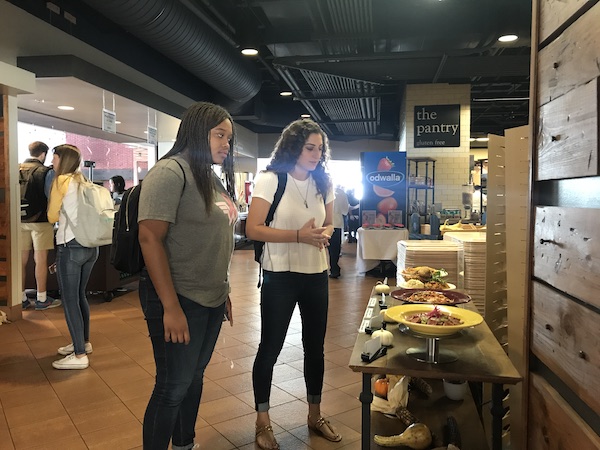
Many students want to know more about what they’re eating
Overall, students would like to be more informed about what they’re eating on campus, where it comes from and how it is prepared.
The poll found that most students consume food on campus.
The poll found that 30 percent of students are completely unaware of nutritional information and 30 percent of students are only slightly aware.
The poll found that 55 percent of students have experienced some level of hindrance due to lack of labels.
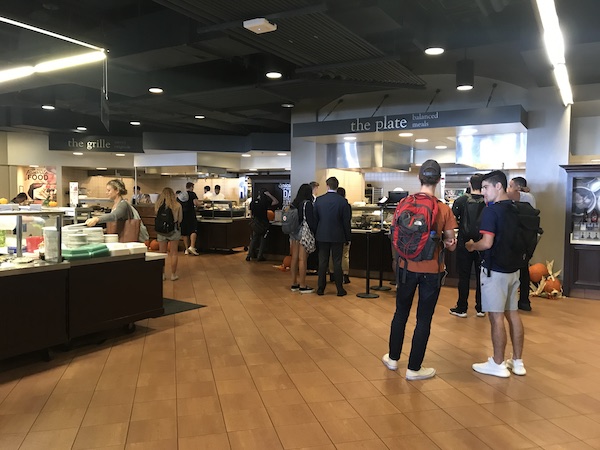
“Food labels and nutrition facts are super important for people with dietary restrictions and other allergies or religious reasons,” Larissa Seibt, junior integrated marketing communication major, said. “It’s super important to be informing the public so they know if they can eat it or not.”
Seibt said she rarely looks at labels, because she doesn’t have any dietary restrictions. Still, she likes to eat healthy. When choosing meals, she often gravitates toward options that she’s eaten before.
Food labeling is a crucial factor in marketing a product and helping students make informed choices, according to a John Hopkins Bloomberg School of Public Health study. However, many students don’t pay attention to labels.
“I personally don’t worry about food labels too much,” junior business major Liam Staats said.
Staats briefly experimented with a vegan diet but did not experience significant issues.
“I found other ways around it,” Staats said. “The sushi chefs were very accommodating. It just became monotonous after a while.”
Jeff Larkin, junior business administration major, said he takes issue with Pepperdine’s imbalance of healthy food options to unhealthy food options in a health-conscious community.
“The Pepperdine population in general is pretty health conscious but there’s overwhelmingly more unhealthy options than healthy options,” Larkin said. “I don’t think that’s taken to the student body.”
Junior advertising major Jacob Hall said finding nutrition information is frustrating.
“The other day, I was trying to buy a muffin, and I didn’t know what kind of muffin I was buying because there was just a platter of them,” Hall said. “And I just smelled them, and I couldn’t tell. I just did it. It’d be nice to know what I’m eating.”
Hall said the lack of labeling hinders his everyday food experience on campus.
“I look at food labels every time,” he said. “At the grocery store, I look at nutrition facts before I buy — like ‘brand A’ versus ‘brand B’ because it’s like a big deal. There are no food labels or nutrition facts in the Caf. If there are, I’ve never seen them.”
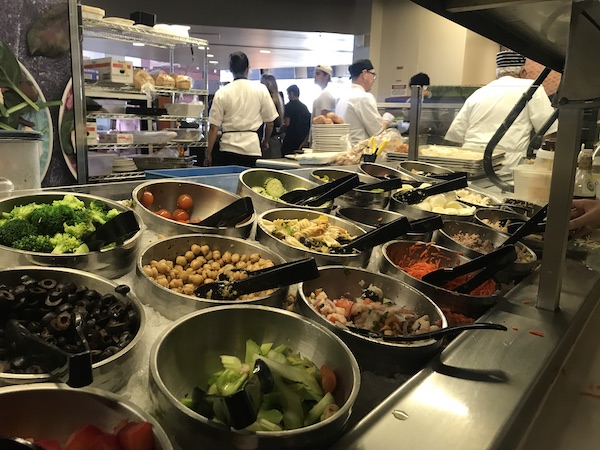
Julian Kaizuka, junior sports administration major, supports the right to know.
“I think we’re all entitled to know what we’re putting in our bodies,” Kaizuka said. “Personally, I’m not concerned with what dishes have in them because I’m not severely allergic to anything; but I’m health conscious. I’d like to know simple things, like calories and fats. It poses more of an issue to kids with allergies.”
Junior religion major Holland Freeman wants to know where his food is sourced. She looks for organic products.
“I think as stewards of this planet that we are all living together, it’s important that our food is coming from places that are sustainable, that the people that are working so hard to make it aren’t being abused,” Freeman said. “You have to look pretty hard to see where the food is being sourced from, and those answers are not always comforting or rewarding. It’s kind of ambiguous, so kind of a mixed bag, I think.”
Holland said that while Pepperdine has gotten better at sourcing organic products, they still need more labels for them.
Freshman undeclared major Jocelyn Shen expressed difficulty tracking her macros — fats, proteins, and carbs — since arriving at Pepperdine. Shen said she has to guess and estimate when consuming food from the Caf.
“It’d be cool if they had the caloric data posted somewhere because it’s really hard for me to count my macros and track what I’m putting in my body when it’s just a bowl of food, like stir fry,” Shen said.
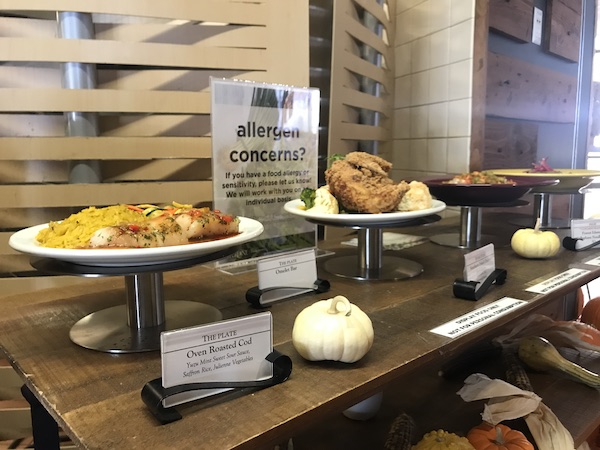
A general list of ingredients are included for main meals. Allergen concern sign reads: “If you have a food allergy or sensitivity, please let us know! We will work with you and your individual needs.”
Food labeling on college campuses isn’t required
While the FDA requires nutrition labels, private businesses and corporations have the authority to monitor how extensive their food labels are, according to the University of California’s Food Safety Program.
Katherine McCune, Pepperdine’s student health counselor and campus nutritionist, reviews on-campus and off-campus dining service options. She said students who have questions related to food allergies or specific food intolerances should visit her office at the Student Health Center for a nutrition evaluation and an individualized meal plan that takes into account their specific nutritional needs.
McCune said that although nutrition labeling offers the consumer information that can help make better choices for their specific needs, nutrition labels are often confusing to the consumer.
“In my presentations to students I will often include how to read a label,” McCune said. “The food industry and many facilities that serve large numbers of people are in the process of including more ‘consumer friendly’ labeling.”
Sarah Dhillon, marketing coordinator for Pepperdine Dining Services, said she is currently working with the management team to ensure that all daily menu items — including the Plate, Homestyle and Fresh stations — are labeled with calorie counts.
Getting accurate calorie counts for dishes made on site will take some time, Dhillon said.
“I am not privy to the cost information for laboratory testing for items,” said Dhillon. “What I can attest to is the man power that it takes to calculate the nutritional information for our menus. Regardless, we are committed to getting this information available to our students.”
Starting this semester, Sodexo started labeling all stationary items, meaning those that do not change on a daily basis, with calories on the menu signs, Dhillon said.
“I know our community wants this information, so we are committed to getting this information on our daily menus as soon as possible,” Dhillon said.
Maddie Boccardi completed the reporting for this story under the supervision of Dr. Christina Littlefield and Dr. Theresa de los Santos in Jour 241 in fall 2018. Dr. Littlefield supervised the web story.



